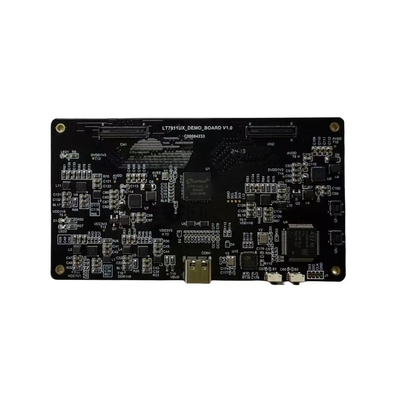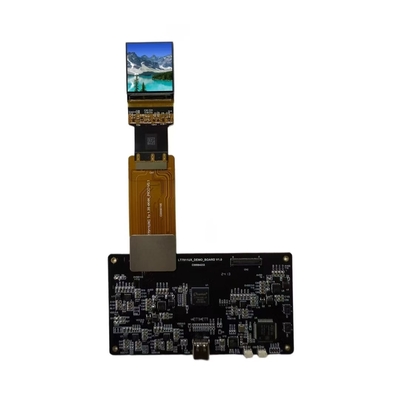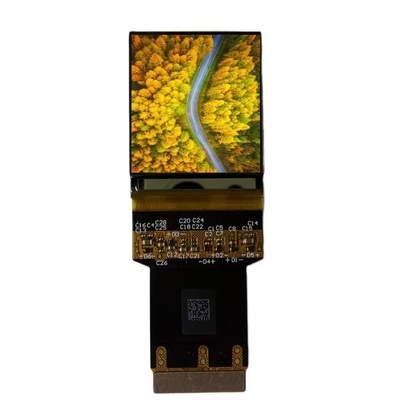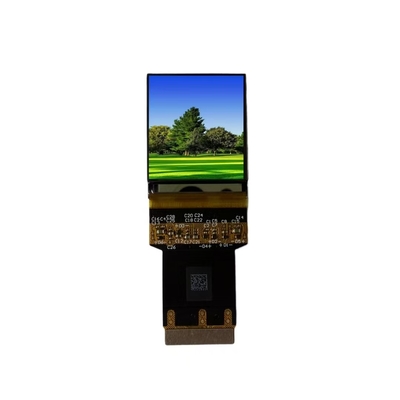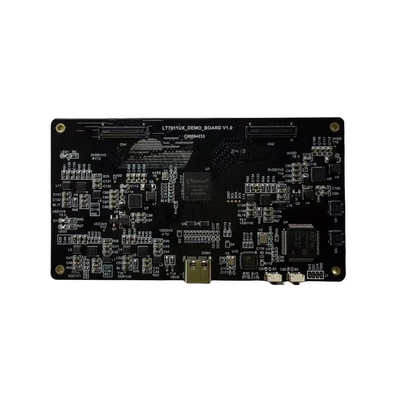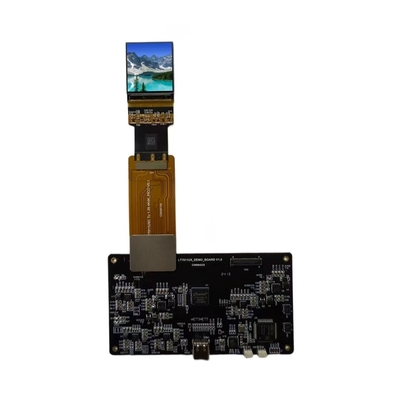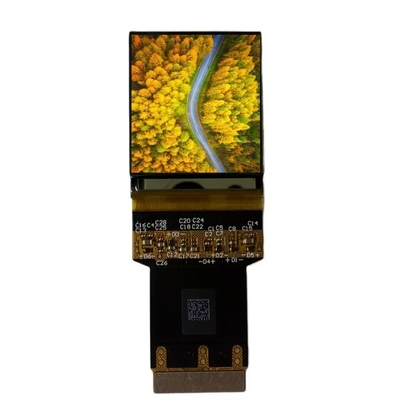-
Esposizione LCD di TFT
-
Esposizione di TFT del touch screen
-
Esposizione rotonda di TFT
-
Barra tipo TFT
-
Display TFT quadrato
-
Esposizione LCD di alta luminosità
-
Display LCD COB
-
Luce solare TFT leggibile
-
Esposizione di UART TFT
-
Display LCD a caratteri
-
Modulo LCD di Dot Matrix
-
Esposizione LCD di segmento
-
Esposizione di PMOLED
-
modulo amoled dell'esposizione
-
esposizione del epaper
-
Visualizzatore digitale del LED
-
Pannello di tocco capacitivo
Modulo display micro OLED da 1,35 pollici, risoluzione 3552x3840, interfaccia MIPI+SPI, 1200 C/D per una visualizzazione ottimale

Contattimi gratis campioni e buoni.
WhatsApp:0086 18588475571
wechat: 0086 18588475571
Skype: sales10@aixton.com
Se avete di preoccupazione, forniamo la guida in linea di 24 ore.
x| Display Technology | MICRO OLED display | name | oled panel |
|---|---|---|---|
| size | 1.35" | resolution | 3552x3840 |
| Brightness | 1200c/d | interface | MIPI+SPI |
| Color Mode | RGB/MONO-G |
Modulo display micro oled da 1,35 pollici, risoluzione 3552x3840, interfaccia MIPI+SPI, 1200 C/D per una visualizzazione ottimale
A: Parametri del prodotto
| Codice articolo: | HX135KDP-NM2 |
| Modalità di visualizzazione | micro OLED da 1,35" |
| Dimensioni esterne (mm) | 25,55*32,02 |
| Dimensioni AA (mm) | 24,65×25,1264 |
| Punti di visualizzazione | 3552x3840 |
| Angolo di visione | tutti |
| Luminosità | 1200c/d |
| Interfaccia | MIPI+SPI |
| Rapporto di contrasto | 100000:1 |
B: Immagine del prodotto
![]()
![]()
![]()
![]()
C: Disegno e definizione dei pin
![]()
D: Conoscenza del prodotto OLED
Vantaggi OLED:
I set OLED sono più leggeri e sottili degli LCD, con contrasto elevato, elevata saturazione del colore e minore consumo
Svantaggi OLED
AMOLED è estremamente costoso rispetto a LCD e TFT, la durata è inferiore a LCD e TFT
E. Informazioni sull'azienda
Vantaggio Huaxin:
1. base di fabbrica situata nella città interna che ha un costo efficace
2. le apparecchiature nuove più avanzate che possono mantenere stabile la qualità
3. la maggior parte dei processi utilizza apparecchiature completamente automatiche che hanno efficienza e qualità stabile
4. ingegneri professionisti e leader della produzione che lavorano nel campo degli LCD da oltre 20 anni
5. progettazione autonoma per prodotti personalizzati
i nostri certificati
1.ISO14001/
2.ISO9001/IATF16949
3.SGS del modulo LCD
- Huaxin Technology (Enshi)Co.,LTD
- Hubei.Enshi
- Data di fondazione: 2009
- impresa high-tech che si occupa principalmente di ricerca e sviluppo, produzione e vendita di LCD, LCM, TFT, retroilluminazione, OLED
- LCD include: VA, TN, HTN, STN, FSTN, CSTN e altre serie
- LCM include: COB, TBA, COG, TP, retroilluminazione a LED e altre serie
- capitale sociale: venti milioni
- personale attuale: 500+
- RD rappresenta il 10%
- QC rappresenta il 15%
F: Capacità di produzione
| Produzione annuale Capacità |
2021 (Attuale) | 2022 (Obiettivo) | 2023 (Sfida) | 2024 (Sfida) | 2025 (Sfida) | Osservazione | ||
| Produzione LCD Capacità |
4.5 | 9 | 9 | 9 | 9 | Unità: migliaia di logaritmi/giorno |
||
| Produzione LCM Capacità |
70 | 150 | 300 | 450 | 450 | Unità: migliaia pezzi/giorno |
||
| Produzione retroilluminazione Capacità |
100 | 200 | 300 | 500 | 500 | Unità: migliaia pezzi/giorno |
||
| Produzione OLED Capacità |
10 | 20 | 30 | 40 | 50 | Unità: migliaia pezzi/giorno |
||
G: Applicazione del prodotto
1. cassetta di sicurezza e strumento
2. serratura e casa intelligente
3. trasmettitore e orologio
4. orologio e radio
5. collimatore e navigatore
H: Caratteristiche del display AMOLED
1. Pixel a emissione automatica:
2. Rapporto di contrasto:
3. Accuratezza e vivacità dei colori:
4. Angoli di visione:
5. Efficienza energetica:
6. Sottigliezza e flessibilità:
7. Tempo di risposta:
I: Come si confronta l'efficienza energetica dei display AMOLED con altre tecnologie di visualizzazione?
1. Consumo energetico:
- I display AMOLED consumano energia su base per pixel, il che significa che i pixel che visualizzano contenuti neri o scuri consumano pochissima energia, mentre i pixel che visualizzano contenuti luminosi o bianchi consumano più energia.
- I display LCD e LED, d'altra parte, richiedono una retroilluminazione costante che consuma energia indipendentemente dal contenuto visualizzato.
2. Dipendenza dal contenuto:
- I display AMOLED sono più efficienti dal punto di vista energetico per i contenuti con molte aree scure o nere, poiché i singoli pixel possono essere spenti per risparmiare energia.
- I display LCD e LED consumano una quantità di energia relativamente costante indipendentemente dal contenuto visualizzato, poiché la retroilluminazione rimane attiva.
3. Controllo della luminosità:
- I display AMOLED possono regolare dinamicamente la luminosità dei singoli pixel, consentendo una migliore efficienza energetica in scenari a bassa luminosità.
- I display LCD e LED in genere hanno una luminosità della retroilluminazione fissa, che può comportare un maggiore consumo di energia anche quando il contenuto del display non richiede la massima luminosità
4. Dimensioni del display
- I display AMOLED tendono ad essere più efficienti dal punto di vista energetico per dimensioni di display più piccole, poiché il consumo di energia aumenta con il numero di pixel.
- I display LCD e LED più grandi possono richiedere retroilluminazioni più avide di energia, riducendo potenzialmente la loro efficienza energetica rispetto ai display AMOLED delle stesse dimensioni.



